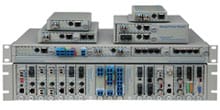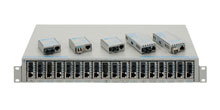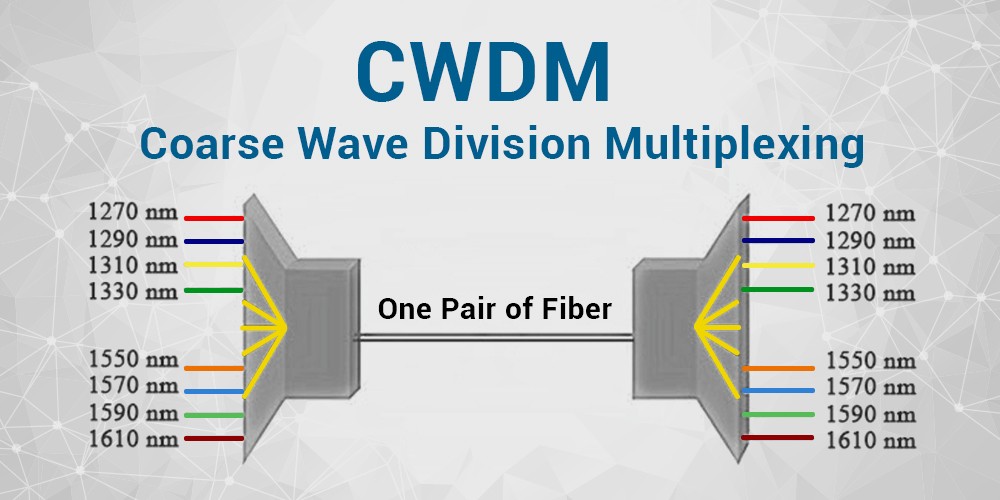- Products
- PoE Media Converters and Switches
- Ethernet & PoE Switches Product Selector
- Multi-Gigabit Ethernet and PoE Switches
- PoE PSE Commercial Switches
- PoE PSE Industrial Fiber Switches
- PoE Industrial Copper Extenders
- PoE Powered Media Converters
- PoE PSE Media Converters
- PoE Extenders & Injectors Product Selector
- Pluggable Transceivers Product Selector
- Single Pair PoE Products
- Product Lines

- iConverter Managed Multi-service Platform
- Copper to Fiber Media Converters
- Ethernet Media Converters
- 10 Gigabit Copper-to-Fiber
- 10/100/1000 Copper to 10 Gigabit Fiber
- 10/100/1000 Copper-to-Fiber with Integrated Management
- 10/100/1000 Industrial Copper-to-Fiber with Integrated Management
- 10/100/1000 Copper-to-Fiber with VLAN
- 10/100/1000 Dual Media Converter with VLAN
- Gigabit Copper-to-Fiber
- 10/100 Copper-to-Fiber with Integrated Management
- 10/100 Industrial Copper-to-Fiber with Integrated Management
- 10/100 Copper-to-Fiber with VLAN
- 10/100 Copper-to-Fiber
- Fast Ethernet Copper-to-Fiber
- Fast Ethernet Redundant Links
- 10Mbps Copper-to-Fiber
- 10Mbps Copper to Coax
- TDM Media Converters
- Serial Media Converters
- Ethernet Media Converters
- Fiber to Fiber Media Converters
- 10 Gigabit Fiber-to-Fiber Converter and Transponder
- 10 Gigabit Industrial Converter and Transponder
- SFP-to-SFP Fiber Converter and Transponder
- SFP-to-SFP Industrial Fiber Converter and Transponder
- Gigabit Fiber to-Fiber with 3 Rs
- 100/1000 Fiber-to-Fiber with 3 Rs
- Gigabit Fiber-to-Fiber
- Fast Ethernet Fiber-to-Fiber with 3 Rs
- Fast Ethernet Fiber-to-Fiber
- OC-3/STM-1 Fiber-to-Fiber
- OC-12/STM-4 Fiber-to-Fiber
- Carrier Ethernet Network Interface Devices
- CE 2.0 - 10G Demarcation NID
- CE 2.0 - 10/100/1000 Mult-port NID
- CE 2.0 - 10/100/1000 Mult-port NID with PoE
- CE 2.0 - 10/100/1000 8-Port NID
- CE 1.0 Service OAM - 10/100/1000 NID
- CE 1.0 Link OAM - 10/100/1000 Copper-to-Fiber NID
- CE 1.0 Link OAM - 10/100 Copper-to-Fiber NID
- CE 1.0 Link OAM - Gigabit Fiber-to-Fiber NID
- CE 1.0 Link OAM - Fast Ethernet Fiber-to-Fiber NID
- CWDM Multiplexers
- T1/E1 Multiplexers
- Ethernet Switch Modules
- Management System
- Chassis Options

- 1-Module Industrial Chassis

- RuggedNet Industrial Switches and Extenders
- Industrial PoE PSE Fiber Switches
- Multi-Gigabit Managed Industrial PoE+/BT Switches
- Multi-Gigabit Unmanaged Industrial PoE+/BT Switches
- 10G Managed 802.3bt PoE Switches
- 10G Unmanaged 802.3bt PoE Switches
- 10G Managed PoE+ Switches
- 10G Unmanaged PoE+ Switches
- 1G Managed PoE+ Switches
- 1G Unmanaged PoE+ Switches
- 1G Unmanaged 802.3bt PoE Switches
- 1G Managed 802.3bt PoE Switches
- Industrial SPE Switches
- Industrial Ethernet Switches
- Industrial PoE Copper Extenders
- Industrial Power Supplies

- OmniConverter Media Converter, Switches and Extenders
- PoE PSE Media Converters
- 10G Multi-Gigabit / Multi-Rate PoE Media Converter
- 10G Multi-Gigabit / Multi-Rate Media Converter
- 10/100 Multi-port PoE+ Media Converter
- 10/100 PoE+ Media Converter
- 10/100/1000 Multi-Port PoE+ Media Converter
- Industrial 10/100/1000 Multi-Port PoE+ Media Converter
- 10/100/1000 PoE+ Media Converter
- 10/100/1000 PoE++ 60W-100W Media Converter
- Industrial 10/100 Multi-port PoE+ Media Converter
- 1U Rack-Mount Shelf
- PoE PSE Compact Switches
- Multi-Gigabit Managed PoE+/BT Switches
- Multi-Gigabit Unmanaged PoE+/BT Switches
- 10G Managed 802.3bt PoE Switches
- 10G Unmanaged 802.3bt PoE Switches
- 10G Managed PoE+ Switches
- 10G Unmanaged PoE+ Switches
- 1G Managed PoE+ Switches
- 1G Unmanaged PoE+ Switches
- 1G Managed 802.3bt PoE Switches
- 1G Unmanaged 802.3bt PoE Switches
- Ethernet Switches
- Single Pair Ethernet (SPE)
- PoE Copper Extenders
- PoE Injectors

- miConverter Unmanaged Miniature Media Converters
- 10/100/1000 Copper-to-Fiber
- Industrial 10/100/1000 Copper-to-Fiber
- 10/100/1000 Ultra-Compact Copper-to-Fiber
- Gigabit Copper-to-Fiber
- 10/100/1000 Copper-to-Fiber PoE Powered
- 10/100 Copper-to-Fiber
- 10/100 Ultra-Compact Copper-to-Fiber
- 10/100 Copper-to-Fiber PoE Powered
- 18-Module Chassis
- Industrial 10/100 Copper-to-Fiber PoE Powered

- FlexSwitch Compact Switches
- Solutions
- Company
- Support
- How to Buy
Understanding CWDM: Boosting Bandwidth with Coarse Wave Division Multiplexing

Coarse Wavelength Division Multiplexing (CWDM) is a technology that simultaneously transmits multiple data signals over a single optical fiber. It uses different wavelengths of light, each carrying a separate data stream. This effectively increases the fiber's capacity, allowing more data to be transmitted over the same infrastructure.
How Does CWDM Work?
CWDM operates on the principle of wavelength multiplexing, where distinct wavelengths carry separate data streams. Each wavelength serves as an independent channel, enabling the transmission of various signals without interference.
Here's a breakdown of the process:
- Data Input:Data from various sources like Ethernet or SONET is fed into the CWDM system.
- Wavelength Multiplexing:The data is then converted into optical signals using lasers with different wavelengths. These wavelengths are spaced apart to avoid interference.
- Transmission:The multiplexed optical signals are then combined and transmitted over a single fiber optic cable.
- Demultiplexing:At the receiving end, the signals are separated based on their wavelengths using a demultiplexer.
- Data Output:Finally, the separated signals are converted back into electrical signals and delivered to their respective destinations.

The Components of CWDM Systems
CWDM Mux/Demux Units
The core of any CWDM system are the Multiplexer (Mux) and Demultiplexer (Demux) units. The Mux combines multiple wavelengths into a single optical signal, while the Demux splits the signal back into its individual wavelengths.
Optical Transceivers
Optical transceivers play a crucial role in CWDM networks by converting electrical signals into optical signals for transmission and vice versa. These devices are pivotal in maintaining the integrity of the data being transmitted.
Advantages of CWDM
Coarse Wavelength Division Multiplexing (CWDM) offers several advantages in optical communication networks, making it a popular choice for certain applications. Here are some of the key advantages of CWDM:
Cost-Effectiveness:
CWDM systems are generally more cost-effective than Dense Wavelength Division Multiplexing (DWDM). The wider wavelength spacing in CWDM allows for simpler and less expensive transceiver designs.
Simplicity and Ease of Deployment:
CWDM systems are easier to deploy and manage. The wider channel spacing reduces the complexity of optical components, making them more straightforward to manufacture, install, and maintain.
Scalability:
CWDM provides a scalable solution, allowing network operators to start with fewer wavelengths and add more as needed. This flexibility is particularly advantageous for networks that may grow over time.
Tolerance to Wavelength Drift:
CWDM systems are more tolerant to wavelength drift, meaning transceivers do not need as precise control over the wavelength as those in DWDM systems. This tolerance simplifies the design and reduces costs.
Short to Medium-Haul Applications:
CWDM is well-suited for short to medium-haul applications, such as metropolitan and regional networks. It provides cost-effective solutions for connecting locations within a city or across shorter distances.
Interoperability:
CWDM adheres to industry-standard wavelength bands, ensuring interoperability among different vendors' equipment. This allows network operators to choose components from various manufacturers, promoting competition and reducing dependency on a single vendor.
Lower Power Consumption:
The simpler design of CWDM components often results in lower power consumption than more complex DWDM systems. This can be an important consideration for energy-efficient network design. Many CWDM multiplexers are passive, meaning they do not require any power at all.
Upgradability:
CWDM systems offer a path for future upgrades. Network operators can upgrade the system by adding additional wavelengths or transitioning to DWDM if higher capacity is needed, providing a smooth evolution as network demands increase.
CWDM vs. DWDM: Key Differences
CWDM (Coarse Wavelength Division Multiplexing) and Dense Wavelength Division Multiplexing (DWDM) are both techniques used in optical fiber communication systems to increase the network's capacity by allowing multiple data to be transmitted over a single fiber optic cable simultaneously. However, there are key differences between the two:
Wavelength Spacing:
- CWDM typically uses wider wavelength spacing, usually 20 nanometers (nm) apart, allowing for up to 18 channels in the 1270 nm to 1610 nm range.
- DWDM uses much narrower wavelength spacing, typically 0.8 nm or less, allowing for many more channels (up to 80 or more) in the same wavelength range.
Channel Density:
- Due to the wider wavelength spacing, CWDM has a lower channel density than DWDM.
- DWDM's narrow spacing allows for a higher channel density, making it more suitable for higher-capacity networks.
Distance and Reach:
- CWDM is typically used for shorter distances, up to 70 kilometers, before requiring amplification or regeneration of the signals.
- DWDM is capable of transmitting over longer distances, reaching hundreds of kilometers without regeneration, making it suitable for long-haul and metro networks.
Equipment Complexity and Cost:
- CWDM systems are generally simpler and less expensive than DWDM systems due to the wider spacing and lower channel count.
- DWDM systems are more complex and expensive due to the precise wavelength control and narrower spacing required for a higher channel count.
Applications:
CWDM is a versatile technology used in various applications, including:
- Enterprise networks: Connecting multiple buildings within a campus or metropolitan area.
- Access networks: Delivering high-bandwidth services to residential and business customers.
- Carrier networks: Extending the reach of existing fiber optic infrastructure.
- Data center interconnection: High-speed data transfer between data centers.
DWDM is commonly deployed in long-haul and metro networks where higher capacity and longer distances are required.
| Feature | CWDM | DWDM |
|---|---|---|
|
Wavelength Spacing |
Wider (20 nm) |
Narrower (1.6 nm) |
|
Number of Channels |
Fewer (4 to 18) |
More (up to 80) |
|
Transmission Distance |
Shorter (up to 70 km) |
Longer (hundreds or thousands of km) |
|
Cost |
Lower |
Higher |
|
Complexity |
Lower |
Higher |
It's important to note that the choice between CWDM and DWDM depends on the network's specific requirements. While CWDM may have limitations, it remains a cost-effective solution for certain applications, especially in scenarios where high capacity and long-distance transmission are not primary concerns. Careful consideration of the network's needs and future growth plans is essential when choosing between these optical multiplexing technologies.
FAQs
Is CWDM passive?
CWDM is a passive technology, meaning it does not require active components like amplifiers or repeaters to transmit signals. The passive nature of CWDM simplifies its deployment, reducing the need for additional power sources or complex infrastructure. This characteristic contributes to the cost-effectiveness and simplicity that make CWDM an attractive solution for various network applications.
How many channels are there in CWDM?
CWDM typically supports a range of channels, each operating at a specific wavelength. The standard CWDM grid consists of 18 channels spaced at intervals of 20nm within the wavelength spectrum. These channels enable the simultaneous transmission of multiple data streams, expanding the overall capacity of the optical fiber and optimizing bandwidth usage.
What is the standard of CWDM?
The standardization of CWDM is governed by the International Telecommunication Union (ITU). ITU defines the specific wavelengths and channel spacing for CWDM, ensuring interoperability and compatibility across different CWDM systems. The ITU standard for Coarse Wavelength-Division Multiplexing (CWDM) is G.694.2. This adherence to standards promotes a uniform implementation of CWDM technology, fostering widespread adoption and ease of integration.
This recommendation defines the wavelength grid for CWDM systems, which includes:
Channel spacing: 20 nanometers (nm)
Wavelength range: 1271 nm to 1611 nm
While the standard allows for a wider range, the most frequently used CWDM wavelength grid is 1471 nm to 1611 nm, offering 4 to 8 channels for most applications. An extended grid of 1271 nm to 1451 nm can be used for additional capacity with up to 18 channels.
What is a CWDM transceiver?
In order to transmit electrical signals to optical signals and vice versa, CWDM transceivers, also known as optical transceivers, are an essential part of CWDM networks. It acts as the interface between the optical fiber and network equipment, ensuring seamless communication. CWDM transceivers come in various form factors, such as SFP, SFP+, and XFP, providing flexibility for network devices and applications.
How do I connect to CWDM?
Connecting to a CWDM network involves several steps. First, ensure that your network equipment is compatible with CWDM technology. Acquire the appropriate CWDM transceivers for your devices, ensuring they match the specific wavelengths used in your CWDM system. Install the transceivers into the corresponding ports on your equipment. Finally, connect the devices using optical fibers, making sure to align the wavelengths correctly. Proper configuration and adherence to CWDM standards are crucial for a successful and efficient connection to a CWDM network.
Final Note
CWDM offers a cost-effective solution for increasing bandwidth on existing fiber infrastructure for applications requiring moderate data transmission over shorter distances. CWDM remains at the forefront, ensuring seamless and efficient data transmission as we continue to ride the wave of technological progress.
iConverter CWDM MUX modules are available in 4 and 8-Channel models, supporting a variety of wavelength combinations and port configurations.
If you find yourself craving more in-depth knowledge or have specific queries about CWDM implementation, Omnitron Systems' dedicated technicians are always available to provide assistance and answer your questions. Don't hesitate to reach out; contact us today to unlock the full potential of CWDM in your network infrastructure. Contact us today!









